According to Greek mythology, fairies originated during the Greek Era, as the Nymphs, who protected the face of Mother Earth.
On the other hand, the historian Gervase of Tilbury reported the origination of the earliest fairies during the 13th Century in England. And a belief in the “angelic” nature of fairies was documented in 19th-century Theosophist societies in England.
However, both Greeks and the people of England believed that rivers and trees contained souls known as Dryads, and the first fairy-like creatures were born from Nymphs.
Many natural phenomena, such as organism evolution and plant growth, were guided by Devas, who lived inside the Sun (Solar Angels).
Nature spirits, elementals, and fairies were among Earthbound Devas, who were depicted as colored flames around the size of a human.
Different theories on the origin of fairies
Content
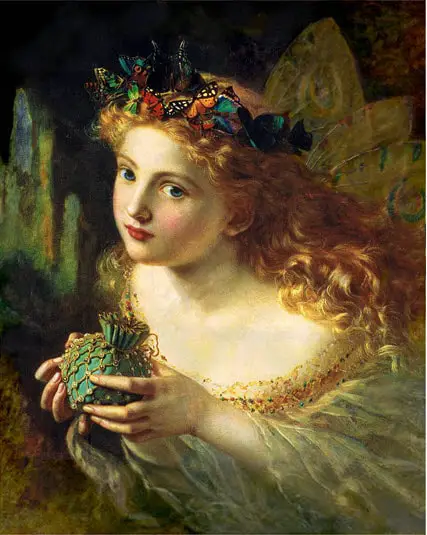
There are several theories about the beginnings of the tradition and the cultural myths about fairy origins.
In Ireland, fairies are regarded as a separate race, with their customs and culture, and are known to be fickle and flighty in their behavior.
A few elements of the fairy mythos are distinctly Celtic and Irish in origin. A miniature people formerly resided in the Celtic nations and the British Isles.
They were thought to be another race, or maybe ghosts, who lived in an Otherworld that existed underground. They were primarily found in hidden hills (ancient burial mounds) or across the Western Sea.
Another theory proposes that fairies are based on the memories of human people rather than spirits.
As a result, when metal-wielding tribes invaded an area where people exclusively used stone weapons, some people managed to flee and hide in forests and caves.
Fairies were supposed to be scared of iron and could not touch it, crediting this theory.
The concealing people most likely stole food and attacked villages because they lived outside society. This could explain why fairies are frequently depicted as playing practical jokes on people.
Fairies were thought to steal new babies and replace them with a ‘changeling’ – a fairy baby – or take new moms and force them to nurse fairy babies with their milk hundreds of years ago.
Fairies, according to Christianity
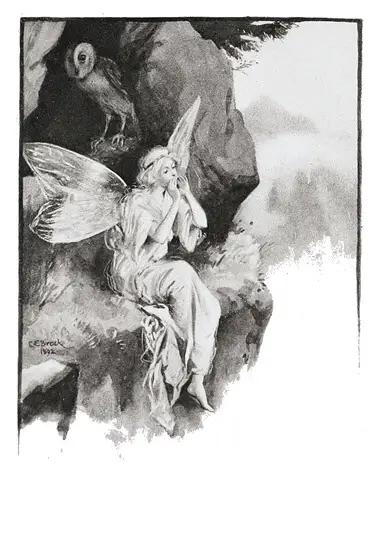
Following the spread of Christianity throughout Europe, some people believed fairies were once angels who had fallen from grace or were good but not good enough to enter Heaven. Fairies were thought to be a type of “demoted” angels.
A group of angels revolted, prompting God to close the gates of heaven. Those who remained in heaven remained angels, those who went to hell became demons, and those stuck in the middle became fairies.
Others claimed that some angels were cast out of heaven because they were neither divine nor bad enough for hell. This theory could explain the practice of paying a “Teind” or tithe to hell; fallen angels, while not entirely devils, could be considered Satan’s subjects.
With the rise of Puritanism, this concept grew in popularity. The hobgoblin, who was previously a benign household spirit, turned evil. Dealing with fairies was once thought to be witchcraft and was punished accordingly.
Most nature fairies are descended from pre-Christian gods and goddesses or are tree and stream spirits.
According to one view, fairies were thought to be the spirits of the deceased. This arose from several factors found in various folklore and myths: ghosts and fairies tell the same or similar stories.
The Irish sdhe, the origin of their term for fairies, were ancient burial mounds; food in Fairyland and Hades was deemed dangerous to eat, and the dead and fairies were depicted as living underground.
Fairies in middle age
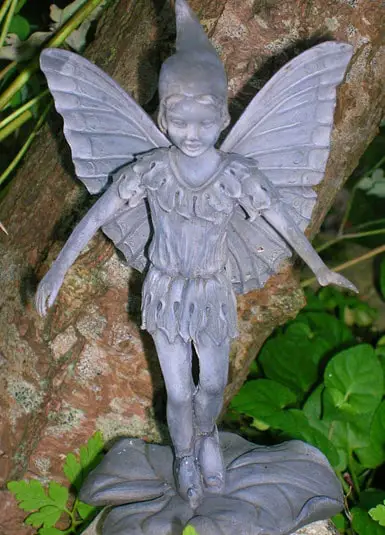
In medieval tales, fairies were shown as creatures that a knight errant may encounter. Sir Launfal was visited by a beautiful lady who sought his love and, like the fairy bride of tradition, set a restriction on him, which he eventually broke.
The Queen of Faerie kidnapped Sir Orfeo’s wife. King Oberon assists Huon of Bordeaux. As the medieval era proceeded, the number of fairy characters diminished, and the figures evolved into wizards and enchantresses.
While the term “fairy” only dates from the Middle Ages in Europe, analogs to these beings can be found in both written and oral literature.
They range from the Sanskrit Gandharva (semidivine celestial musicians) to the nymphs of Greek mythology.
And Homer, the jinni of Arabic mythology, and similar folk characters of the Samoans, Arctic peoples, with other indigenous Americans.
The current image of fairies in children’s stories is a taming of what was previously a profound, even sinister folklore tradition. Fairies were once considered dangerous, strong entities sometimes kind to humans but could also be cruel or mischievous.
Fairies in literature
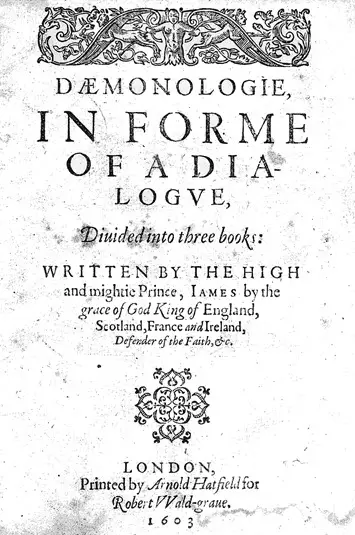
Fairies and folk mythology continued to acquire popularity in writing as the century progressed and also was an ordinary topic matter in other aspects of Victorian culture.
The immensely ornate canvases of Victorian fairy painting, which typically dealt with profoundly adult subject matter such as opium addiction and sexuality, are one of the more strange cultural manifestations of fairy tradition.
Morgan le Fay, whose connection to the world of Faerie is implied in her name, is a woman whose magical abilities originate from the study in the 1485 book Le Morte d’Arthur. Fairies have never totally departed from folklore, even if their numbers have dwindled through time.
Although Sir Gawain and the Green Knight is a 14th-century story, the Green Knight is a supernatural entity. In his 1590 work The Faerie Queene, Edmund Spenser included fairies.
Fairies are freely blended with classical nymphs and satyrs in many works of fiction, while they are portrayed as displacing Classical figures in others (e.g., Lamia).
King Arthur was crowned in “the kingdom of the fairy” and transported to Avalon by four fairy queens upon his death, according to 15th-century poet and monk John Lydgate, where he lays under a “fairy hill” until he was needed again.
In William Shakespeare’s A Midsummer Night’s Dream, a disturbance of nature caused by a fairy dispute creates tension that runs through the plot and informs the characters’ actions. The play is set simultaneously in woodland and the realm of Fairyland, under the light of the Moon.
According to Maurice Hunt, Chair of the English Department at Baylor University, the blurring of the identities of fantasy and reality allows for “that delightful, narcotic dreaminess associated with the fairies of the play.”
In his 1922 book “The Coming of the Fairies,” Arthur Conan Doyle reported that eminent theosophist E. L. Gardner compared fairies to butterflies.
Where the function was to provide an essential link between the energy of the sun and the plants of Earth, describing them as “no clean-cut shapes, small, hazy, and somewhat luminous clouds of color with a brighter sparkish nucleus.”
If the fairy builders were not present, the plant development that we consider to be the natural and inevitable result of combining the three variables of sun, seed, and soil would never happen.
According to Diane Purkiss, fairies have been equated with the untimely deceased who left “unfinished lives.” In one story, a man was captured by fairies and discovered that anytime he stared at a fairy long enough, it appeared to be a dead neighbor of his.
This was one of the more popular theories, however, many informants had reservations about it.
Fairies as described by legends
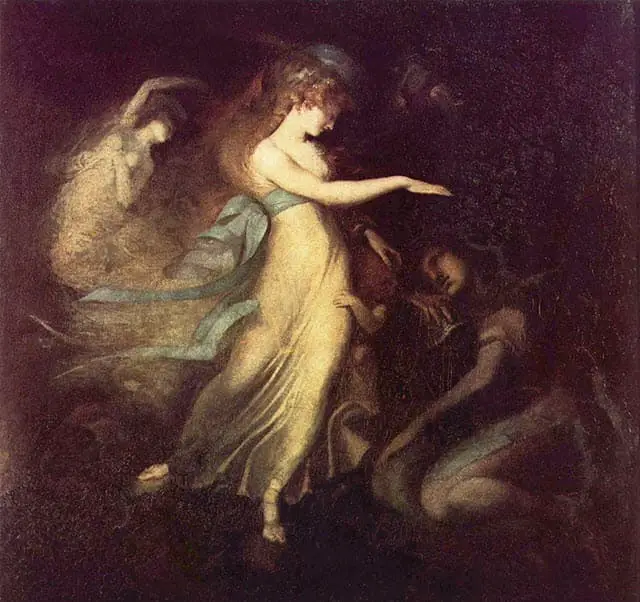
In Scotland, fairy women took on the form of deer, while witches took on the conditions of mice, hares, cats, gulls, or black sheep.
In “The Legend of Knockshigowna,” a fairy queen disguised herself as a big horse with eagle wings and a dragon tail. She hissed loudly and spat fire to frighten a farmer who pastured his herd on fairy turf.
Then she’d transform into a little man with a lame leg, a bull’s head, and a lambent flame circling it.
The elf-knight is a Bluebeard figure in the 19th-century child ballad “Lady Isabel and the Elf-Knight,” Isabel must mislead and kill him to save her life.
The child song “Tam Lin” indicates that, while living among the fairies and possessing fairy powers, the title character was an “earthly knight,” and that, while his life was now delightful, he feared that the fairies would pay him as their teind (tithe) to hell.
Modern beliefs on fairies

Fairies are frequently depicted in today’s children’s fairy tales as small, otherworldly entities with wings gleaming with unusual brightness.
They also possessed peculiar magical abilities, such as Tinkerbell in Peter Pan’s narrative or the Fairy Godmother in Cinderella’s story.
Between the 18th and 20th centuries, oral tradition was used to create modern fairies before they were written down.
Conclusion
Over history, there has been a lot of talk about the different types of fairies. People from the past did come up with various theories, thoughts, and beliefs that led us to believe in the existence of fairies.
Much historical literature also seems to be talking about fairies and their existence which are extremely fun to read. We have grown up listening to different fairytales imagining ourselves in their wonderland and being fascinated with the power and strength they possessed.
But, no matter what theories or stories have been built around fairies, it’s hard to believe their existence in the natural human world.
